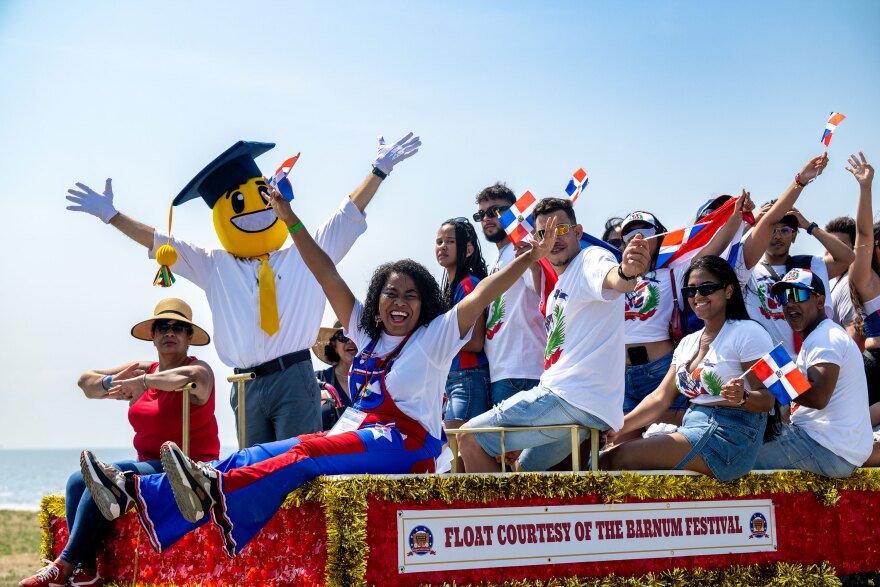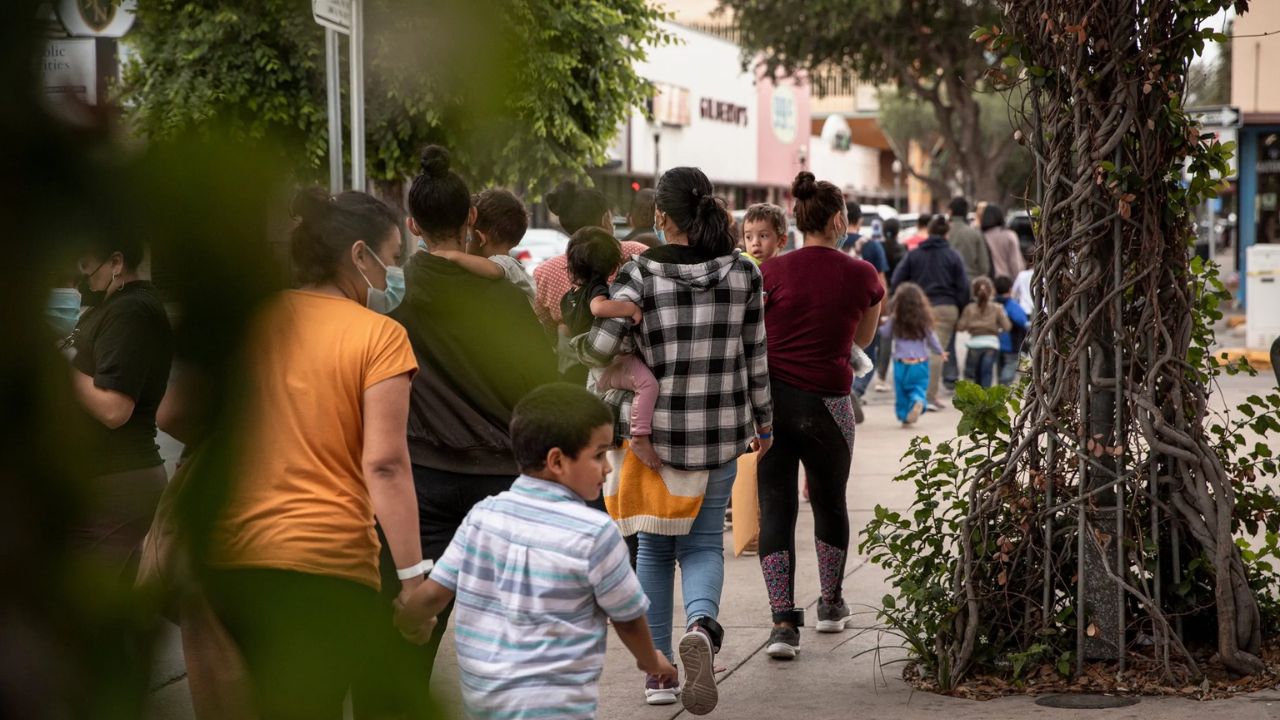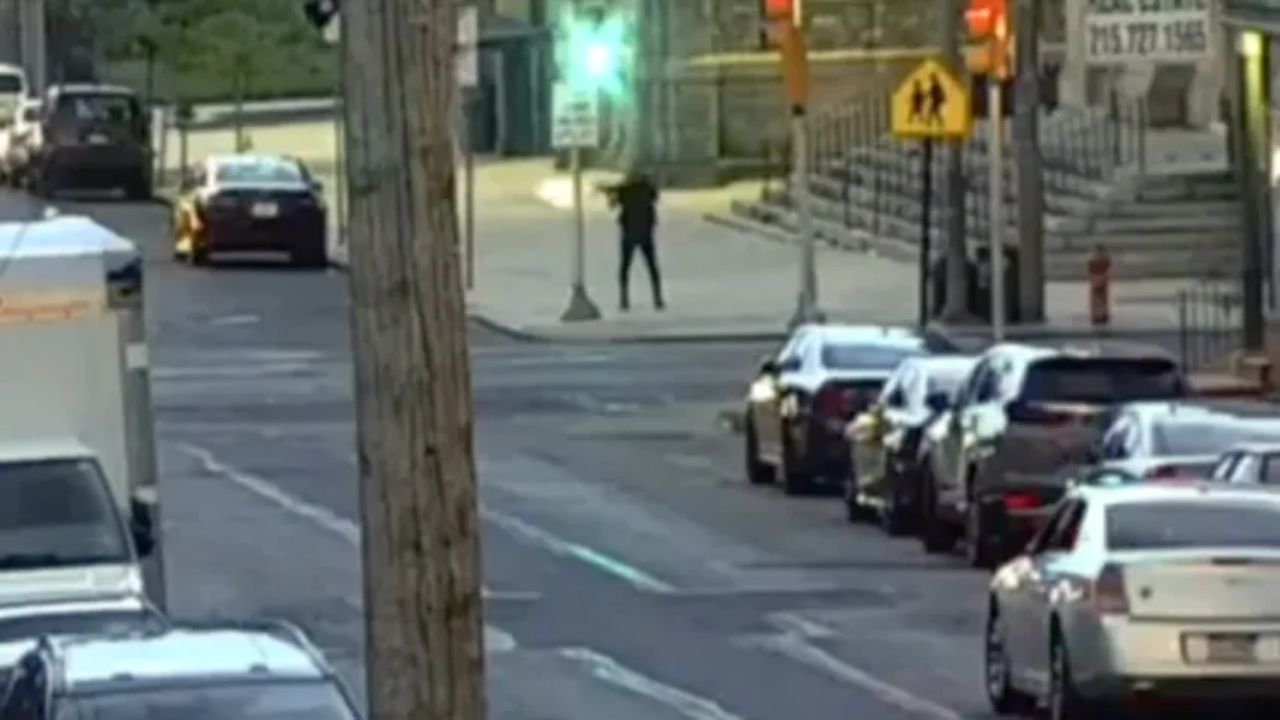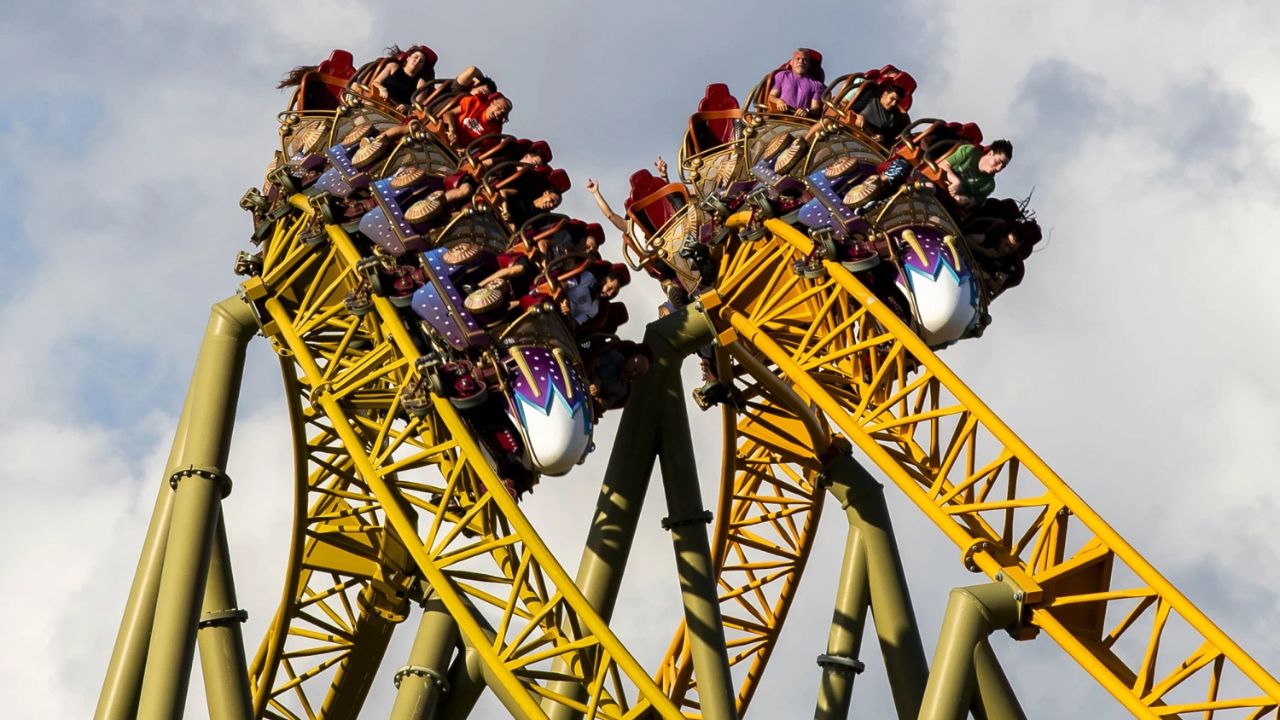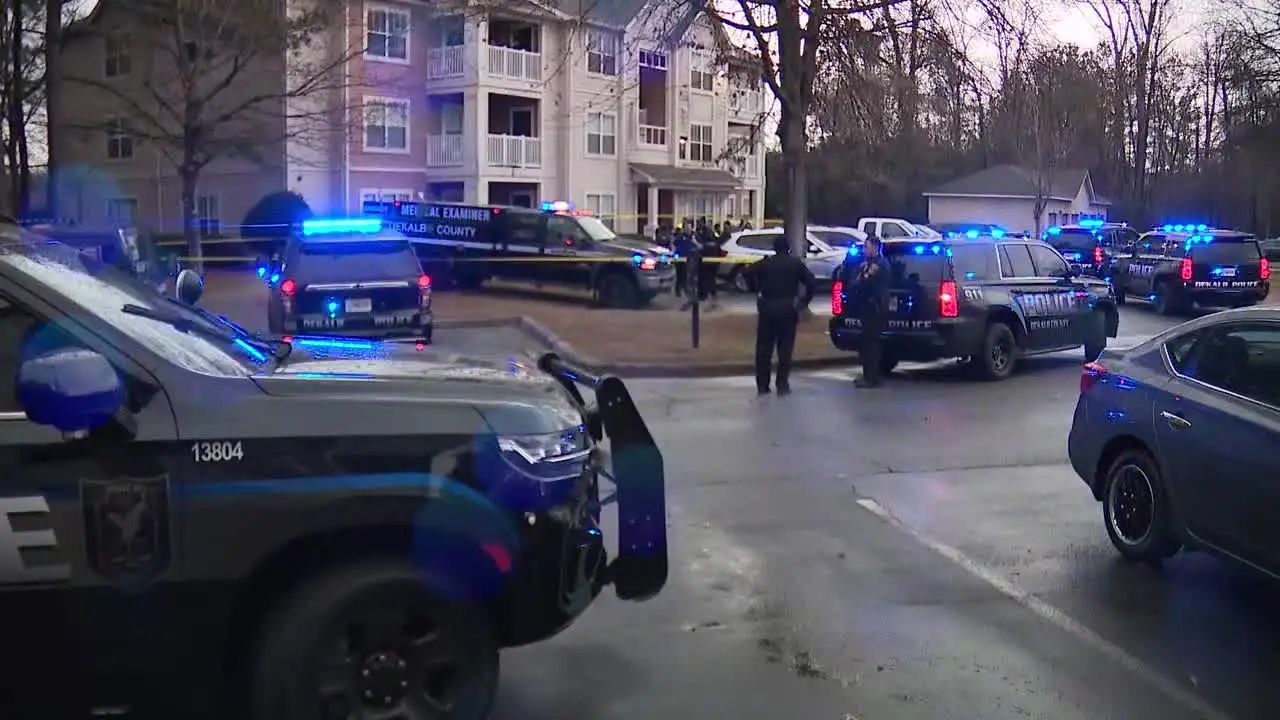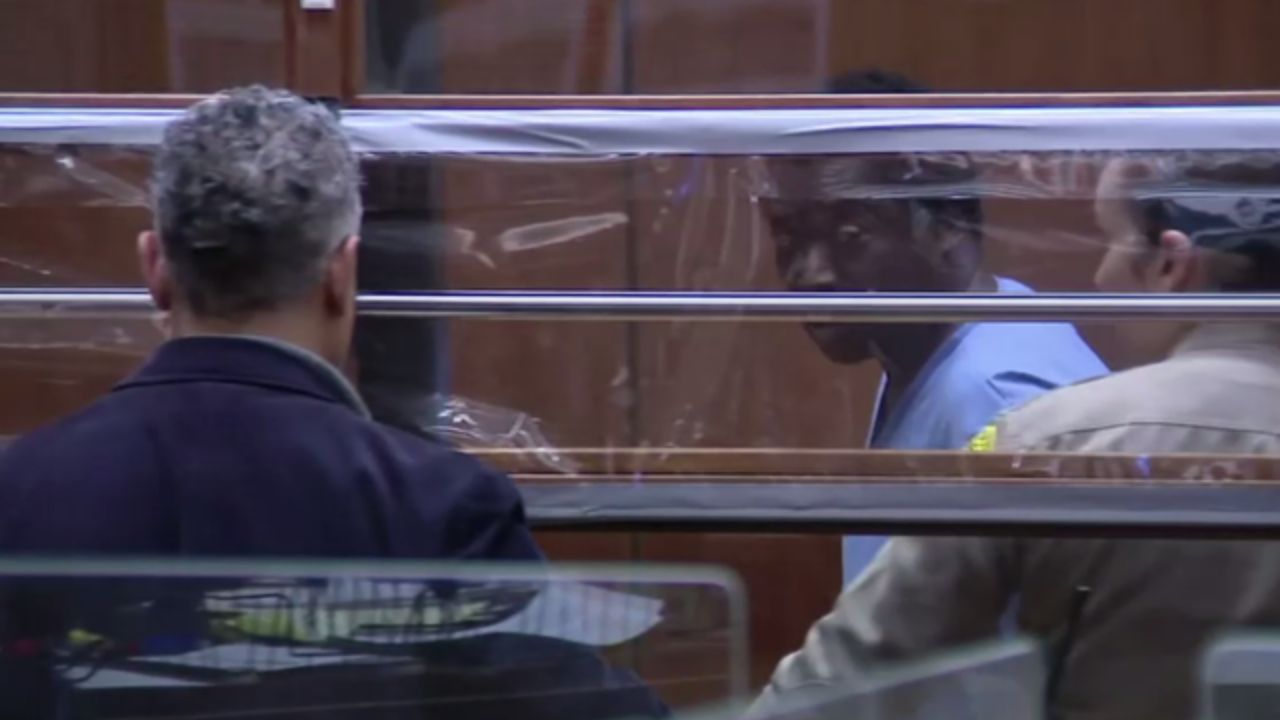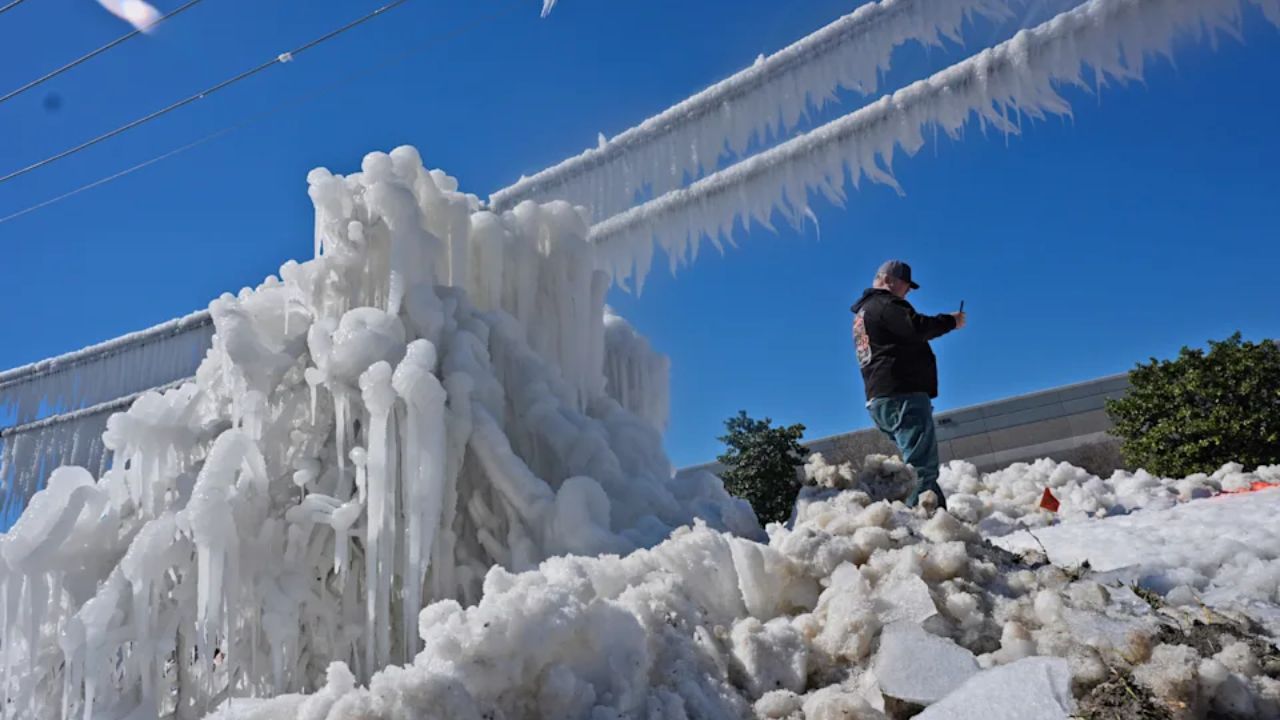Natalie Feliz was wearing half-blue, half-red overalls with star-shaped stickers at the corners of her eyes on Sunday at Seaside Park in Bridgeport. Her attire blatantly represented the Dominican Republic, where she was born.
Feliz was one of the hundreds of Latinos and Dominicans who marched in Bridgeport’s inaugural Dominican Parade. She described it as an incredible event that she believed was long overdue while sitting at the edge of the float that symbolized her city of Danbury.
Feliz mentioned that everyone in Connecticut had to travel to Manhattan, New York, or Massachusetts to see a Dominican procession, but now we have it right here in Connecticut. I’m overjoyed.
Feliz, who is referred to in the community as Tia Candy or Auntie Candy, expressed her happiness at being surrounded by her people who embrace their tradition and assist the next generation in doing the same.
Feliz stated that everyone of the younger generation that is developing and unable to travel [to] DR can experience our culture here.
Edwin Lapaix-Matos accompanied her on the Danbury float. He added that he thought it was worthwhile to come together for such a unique occasion.
I think it’s important to know where we come from, and to also realize that there’s a lot of us, Lapaix-Matos said. You become aware that you are only a piece of the puzzle when you truly consider the sheer number of people present.
He added that it was a chance to improve the Dominican community’s reputation.
Lapaix-Matos remarked, “I like to see everyone’s so organized [and] maybe try to clean the name up a little bit.” We may have been a touch too busy in other parades. This one, we’re trying to keep it down a little bit. Later on, we might have a little more fun, but for now, we’re trying to maintain our composure, play nice music, and keep the music at a level.
Speaking to guests at the park’s harborfront amphitheater, organizer Ramona Santelises of the Dominican American Coalition of Connecticut shared that view.
On stage at the beginning of the festival, Santelises declared in Spanish, “Let’s make today a beautiful day.” Allow history to record that we Dominicans are decent, wise, and well-prepared individuals; nobody can claim that we are terrible at all; rather, we are all industrious, compassionate, modest, and affectionate.
A Day for the Dominican Diaspora in Connecticut
During the parade, Dominican Republic flags were visible all over Bridgeport’s Seaside Park’s coastline: on the hoods of high-end sports cars or vintage vehicles, on the decorated floats that represented various Connecticut cities, and in the hands of spectators and parade participants.
For Rafael Pichardo, the occasion brought back memories of home against the backdrop of the Long Island Sound.
This reminds me of Santo Domingo, what they call the Malec n, in Puerto Plata, which is right by the ocean, Pichardo said. The situation there is a lot like this.
Pichardo, his wife, and their two kids were watching the parade. According to him, his entire family hails from the Caribbean country. His family traveled from Hartford to join the community and celebrate this historic event.
“I’m really happy that they’re doing it now because [the parade] should have been here earlier,” Pichardo added. I was just explaining to my children the value of celebrating their culture and learning about their Dominican heritage, which is also a means of being American. It’s critical that they comprehend both cultures because we are Dominican Americans.
Pichardo said he was excited for his kids to see the Diablos Cojuelos, or limping devils , in the parade. Dominican culture is centered around these figures. They don long-horned masks and outfits in vivid, striking hues. They like to appear during carnivals and festivals to wreak havoc, frighten people, and engage in some lighthearted trickery.
With perhaps a dozen Diablos Cojuelos in the procession, the Pichardo family’s goal was fulfilled. When the audience demanded more, they continued the performance, cracking their whips to ecstatic cries.
According to Esmaelen Arroyo, it was excellent. Arroyo lives in Bridgeport and is a Puerto Rican. Along with her husband and their Puerto Rican and Dominican daughters, she attended the parade with her family.
Arroyo said she enjoyed the vibe from the parade but that the procession itself could ve been better rehearsed.
Throughout its course, the parade made multiple stops where people and cars gathered to watch and wait for the procession to continue. However, Arroyo stated that she is giving them some leeway.
You understand? It takes time. According to Arroyo, we never had one. They will therefore be on target and it will be much better once they find [their] groove and begin doing this every other year.
In addition, Arroyo stated that it’s time for Connecticut’s Dominicans to receive some recognition.
Do you know why? because, according to Arroyo, Dominicans never hold a Dominican parade. It is best for them to share their culture with the world, show love to one another, and simply enjoy themselves. For once, they get a day all to themselves.
Census estimates from 2023show nearly 50 thousand Dominicans live in the state, ranking as the third largest Hispanic group in Connecticut, after Puerto Ricans and Mexicans.
A Pura Cepa festival
People gathered in front of the amphitheater for live entertainment and music following the parade.
Some people wore the Dominican flag as capes as they strolled past the food trucks and community organizations’ booths. Others took lawn chairs to watch the performance. In the Dominican Republic, dominoes is a popular game, and many even set up a table to play it.
Vibing to the bachata emanating from the stage, Wanda Hoogleuter was dancing by herself on the grass. She claimed to be a Dominican de pura cepa, or “authentic” Dominican with all the traits and pride of the culture, from the capital city of Santo Domingo.
Hoogleuter said she and her folks had a great chance to rediscover what it means to be Dominican Republic natives thanks to the procession and celebration.
In Spanish, Hoogleuter remarked, “The Dominican spirit remains in your blood.” It’s good to embrace that legacy here in Connecticut. Dominicans come to the United States in search of a better quality of life, but they also carry their family and traditions with them.
